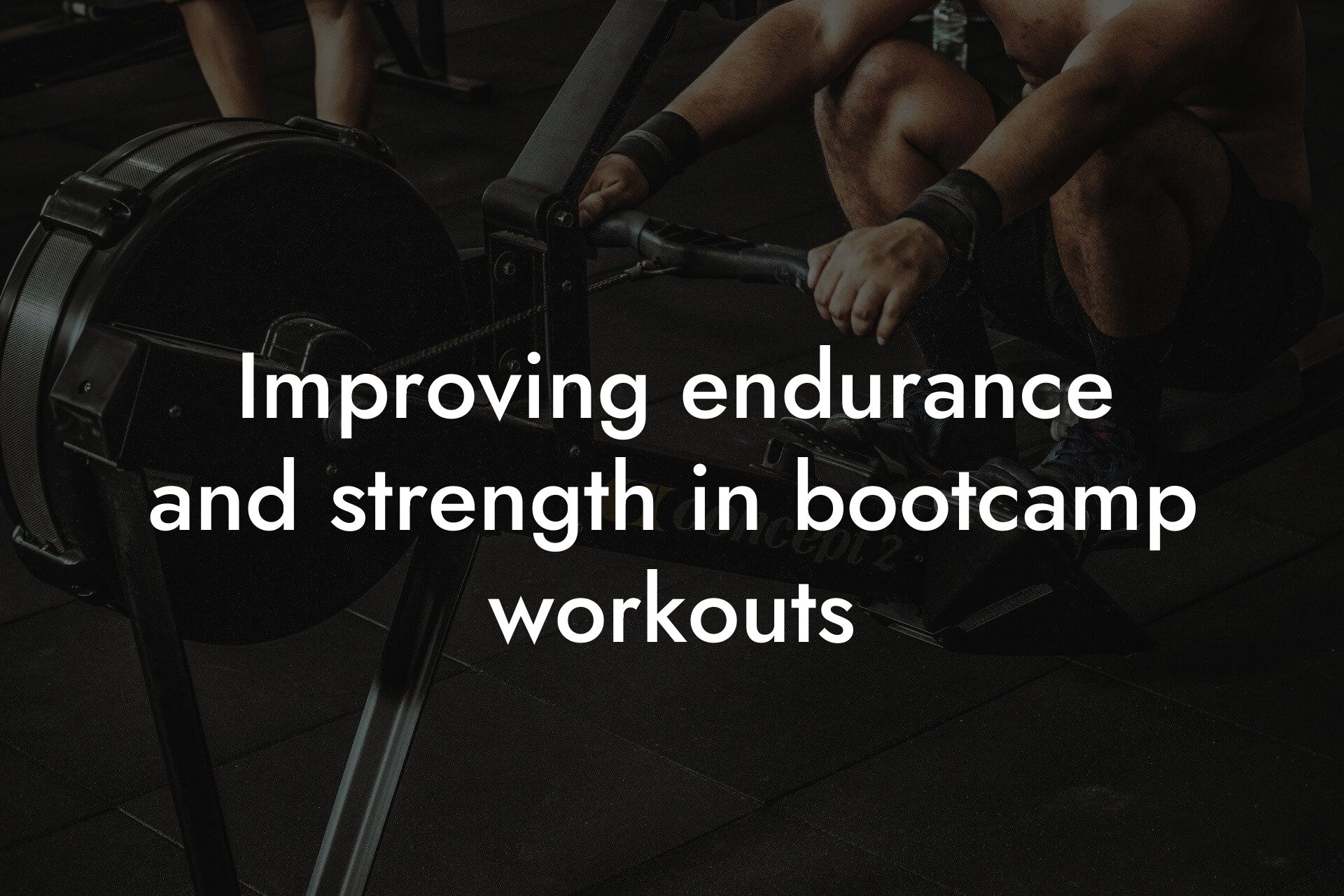Understanding Body Fat and Its Impact on Bootcamp Performance
As a high-earning professional, you understand the importance of maintaining a healthy and fit physique. Bootcamp workouts are an excellent way to challenge yourself and achieve your fitness goals. However, having excess body fat can hinder your progress and make it more challenging to achieve the results you desire. In this article, we will explore the importance of reducing body fat for improved bootcamp workout results and provide you with a comprehensive guide on how to do so.
Table of Contents
- Understanding Body Fat and Its Impact on Bootcamp Performance
- The Risks of Excess Body Fat
- The Benefits of Reducing Body Fat for Bootcamp Workouts
- Understanding Body Fat Percentage
- Creating a Calorie Deficit for Weight Loss
- Macronutrient Breakdown for Weight Loss
- Incorporating High-Intensity Interval Training (HIIT) for Fat Loss
- Staying Hydrated and Getting Enough Sleep for Fat Loss
- Monitoring Progress and Staying Motivated
- Frequently Asked Questions
The Risks of Excess Body Fat
Excess body fat is not only aesthetically unappealing, but it also poses significant health risks. Carrying excess body fat increases your risk of developing chronic diseases such as diabetes, heart disease, and certain types of cancer. Moreover, excess body fat can also negatively impact your mental health, leading to low self-esteem, anxiety, and depression. In the context of bootcamp workouts, excess body fat can make it more challenging to perform exercises, increase your risk of injury, and reduce your overall endurance.
The Benefits of Reducing Body Fat for Bootcamp Workouts
Reducing body fat can have a significant impact on your bootcamp workout results. With lower body fat levels, you can expect to:
- Improve your overall endurance and stamina
- Increase your strength and power
- Enhance your athletic performance
- Reduce your risk of injury
- Improve your mental focus and concentration
- Boost your self-confidence and self-esteem
Understanding Body Fat Percentage
Body fat percentage is a measure of the percentage of your body weight that is composed of fat. For men, a healthy body fat percentage ranges from 8-19%, while for women, it ranges from 21-33%. Having a high body fat percentage can make it challenging to achieve your fitness goals, including improving your bootcamp workout results. At Tano Performance Group, we use DEXA machine technology to provide our clients with an accurate measurement of their body fat percentage, as well as other important metrics such as bone density and lean muscle mass.
Creating a Calorie Deficit for Weight Loss
Reducing body fat requires creating a calorie deficit, which means consuming fewer calories than your body burns. There are several ways to create a calorie deficit, including:
- Eating fewer calories by reducing your daily caloric intake
- Increasing your physical activity levels to burn more calories
- Combining diet and exercise to create a calorie deficit
A safe and sustainable rate of weight loss is 1-2 pounds per week, which translates to a daily calorie deficit of 500-1000 calories. However, it's essential to consult with a healthcare professional or registered dietitian to determine the best calorie deficit strategy for your individual needs.
Macronutrient Breakdown for Weight Loss
When it comes to reducing body fat, the macronutrient breakdown of your diet plays a critical role. A balanced diet that includes the right proportions of protein, carbohydrates, and healthy fats can help support weight loss and improve overall health. Aim to consume:
- 1.6-2.2 grams of protein per kilogram of body weight
- 2-3 grams of complex carbohydrates per kilogram of body weight
- 0.5-1 gram of healthy fats per kilogram of body weight
Additionally, focus on whole, unprocessed foods such as lean proteins, whole grains, fruits, and vegetables, and limit your intake of processed and high-calorie foods.
Incorporating High-Intensity Interval Training (HIIT) for Fat Loss
High-Intensity Interval Training (HIIT) is a highly effective way to burn fat and improve cardiovascular fitness. HIIT involves short bursts of high-intensity exercise followed by brief periods of rest. This type of training has been shown to:
- Improve insulin sensitivity and glucose metabolism
- Increase fat oxidation and energy expenditure
- Enhance cardiovascular fitness and endurance
Incorporate HIIT workouts into your bootcamp routine 2-3 times per week, focusing on exercises such as sprints, burpees, jump squats, and mountain climbers.
Staying Hydrated and Getting Enough Sleep for Fat Loss
Staying hydrated and getting enough sleep are critical components of reducing body fat and improving overall health. Aim to:
- Drink at least 8-10 glasses of water per day
- Aim for 7-9 hours of sleep per night
Proper hydration and sleep can help regulate hunger hormones, improve insulin sensitivity, and enhance fat metabolism.
Monitoring Progress and Staying Motivated
Monitoring your progress and staying motivated are essential components of reducing body fat and achieving your fitness goals. At Tano Performance Group, we use DEXA machine technology to track our clients' progress and provide them with personalized feedback and guidance. Additionally, consider:
- Tracking your weight, measurements, and body fat percentage regularly
- Taking progress photos and tracking your visual progress
- Setting realistic and achievable goals, and celebrating your successes
- Finding a workout buddy or accountability partner to stay motivated
By following these tips and staying committed to your fitness goals, you can reduce your body fat percentage, improve your bootcamp workout results, and achieve a healthier, more confident you.
Frequently Asked Questions
What is the ideal body fat percentage for optimal bootcamp workout results?
For men, the ideal body fat percentage for optimal bootcamp workout results is between 10-15%, while for women, it's between 15-20%. Having a lower body fat percentage can improve overall physical performance, increase muscle definition, and enhance overall health.
How does body fat affect my bootcamp workout performance?
Excess body fat can negatively impact your bootcamp workout performance by reducing your endurance, strength, and agility. It can also increase your risk of injury and make it more challenging to achieve your fitness goals. On the other hand, having a healthy body fat percentage can improve your overall physical performance and enhance your workout results.
What are the health risks associated with high body fat percentage?
Having a high body fat percentage can increase your risk of chronic diseases such as diabetes, heart disease, and certain types of cancer. It can also lead to joint problems, sleep apnea, and mental health issues like depression and anxiety.
How can I measure my body fat percentage?
There are several ways to measure body fat percentage, including skinfold measurements, bioelectrical impedance analysis (BIA), dual-energy X-ray absorptiometry (DXA), and hydrostatic weighing. You can also use a body fat caliper to measure your skinfold thickness at various points on your body.
What is the best way to reduce body fat for improved bootcamp workout results?
The best way to reduce body fat for improved bootcamp workout results is through a combination of a healthy diet, regular exercise, and lifestyle changes. Focus on eating a balanced diet that is high in protein, fiber, and healthy fats, and low in sugar, salt, and unhealthy fats. Also, aim to exercise regularly, including both cardio and strength training exercises, and get enough sleep and rest.
How long does it take to notice significant changes in body fat percentage?
The time it takes to notice significant changes in body fat percentage can vary depending on individual factors such as starting point, diet, exercise, and lifestyle changes. However, with consistent effort and dedication, you can start to notice changes in as little as 4-6 weeks.
What are the benefits of reducing body fat for improved bootcamp workout results?
Reducing body fat can improve your overall physical performance, increase your endurance and strength, and enhance your workout results. It can also boost your confidence, improve your mental health, and reduce your risk of chronic diseases.
How can I maintain my weight loss and body fat percentage over time?
To maintain your weight loss and body fat percentage over time, focus on making sustainable lifestyle changes that you can maintain in the long term. This includes eating a healthy diet, exercising regularly, getting enough sleep and rest, and managing stress.
What are some common mistakes people make when trying to reduce body fat?
Some common mistakes people make when trying to reduce body fat include crash dieting, overexercising, and neglecting to eat enough protein. It's also important to avoid fad diets and quick fixes, and instead focus on making sustainable lifestyle changes.
How can I increase my metabolism to burn more fat?
To increase your metabolism and burn more fat, focus on eating a healthy diet that is high in protein, fiber, and healthy fats, and low in sugar, salt, and unhealthy fats. You can also try incorporating metabolism-boosting exercises like high-intensity interval training (HIIT) into your workout routine.
What role does protein play in reducing body fat?
Protein plays a crucial role in reducing body fat by helping to build and repair muscle tissue. It can also help to increase your metabolism and reduce hunger and cravings. Aim to consume at least 1 gram of protein per pound of body weight per day.
How can I reduce my body fat percentage without losing muscle mass?
To reduce your body fat percentage without losing muscle mass, focus on eating a healthy diet that is high in protein and low in sugar, salt, and unhealthy fats. You can also try incorporating strength training exercises into your workout routine to help build and maintain muscle mass.
What are some healthy snacks that can help support my weight loss goals?
Some healthy snacks that can help support your weight loss goals include fruits, vegetables, nuts, seeds, and protein-rich foods like Greek yogurt and hard-boiled eggs. Avoid sugary and processed snacks that can hinder your progress.
How can I stay motivated and accountable on my weight loss journey?
To stay motivated and accountable on your weight loss journey, try setting realistic goals and tracking your progress. You can also find a workout buddy or join a fitness community to provide support and encouragement.
What are some common myths about reducing body fat?
Some common myths about reducing body fat include the idea that you need to eat low-fat or fat-free foods, or that you need to do hours of cardio exercise per day. It's also important to debunk the myth that you can spot reduce fat in specific areas of your body.
How can I reduce my body fat percentage quickly and safely?
To reduce your body fat percentage quickly and safely, focus on making sustainable lifestyle changes that you can maintain in the long term. Avoid fad diets and quick fixes, and instead focus on eating a healthy diet, exercising regularly, and getting enough sleep and rest.
What are some tips for reducing body fat in specific areas of the body?
To reduce body fat in specific areas of the body, focus on incorporating exercises that target those areas into your workout routine. For example, if you want to reduce belly fat, try incorporating exercises like planks and crunches into your routine.
How can I maintain my muscle mass while reducing body fat?
To maintain your muscle mass while reducing body fat, focus on eating a healthy diet that is high in protein and low in sugar, salt, and unhealthy fats. You can also try incorporating strength training exercises into your workout routine to help build and maintain muscle mass.
What are some common mistakes people make when trying to maintain their weight loss?
Some common mistakes people make when trying to maintain their weight loss include going back to old habits, not tracking their progress, and not making adjustments to their diet and exercise routine as needed.
How can I get support and guidance on my weight loss journey?
To get support and guidance on your weight loss journey, consider working with a personal trainer or nutritionist who can provide customized advice and guidance. You can also join a fitness community or find a workout buddy to provide support and encouragement.
What are some tips for reducing body fat for beginners?
For beginners, some tips for reducing body fat include starting with small, achievable goals, focusing on making sustainable lifestyle changes, and avoiding fad diets and quick fixes. It's also important to consult with a healthcare professional before starting any new diet or exercise program.
How can I track my progress and stay motivated on my weight loss journey?
To track your progress and stay motivated on your weight loss journey, try taking progress photos, tracking your measurements, and setting realistic goals. You can also use a food diary or mobile app to track your diet and exercise routine.
Here are some related articles you might love...
- How DEXA scans can benefit bootcamp enthusiasts
- Preventing injuries during bootcamp training
- Improving endurance and strength in bootcamp workouts
- Balancing strength, speed, and flexibility in bootcamp
- The importance of bone density in bootcamp fitness
- Strength training tips specific to bootcamp exercises
- How body composition affects bootcamp fitness performance
- Nutrition tips for sustained energy during bootcamp sessions
- Maintaining muscle recovery with bootcamp training
Zak Faulkner
Zak Faulkner is a leading authority in the realm of physical health and body composition analysis, with over 15 years of experience helping professionals optimise their fitness and well-being. As one the experts behind Tano Performance Group, Zak has dedicated his career to providing in-depth, science-backed insights that empower clients to elevate their physical performance and overall health.
With extensive knowledge of DEXA technology, Zak specializes in delivering comprehensive body assessments that offer precise data on body fat, muscle mass, bone density, and overall physique. His expertise enables individuals to make informed decisions and achieve their fitness goals with accuracy and confidence. Zak’s approach is rooted in a deep understanding of human physiology, combined with a passion for helping clients unlock their full potential through personalised strategies.
Over the years, Zak has earned a reputation for his commitment to excellence, precision, and client-focused service. His guidance is trusted by top professionals who demand the best when it comes to their health. Whether advising on fitness programs, nutritional strategies, or long-term wellness plans, Zak Faulkner’s insights are a valuable resource for anyone serious about taking their health and fitness to the next level.
At Tano Performance Group, Zak continues to lead our Content Team revolutionising how professionals approach their physical health, offering unparalleled expertise that drives real results.




